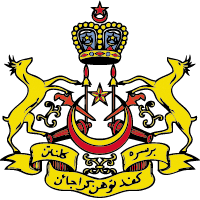 For more information please visit
For more information please visit
http://davidtuggy.com/mexico/ling/glosario/E005bi-OrgansArt.htm
 For more information please visit
For more information please visit
http://www.ic.arizona.edu/~lsp/IPAprint.html

For more information please visit
http://kevinroddy.blogharbor.com/blog/_archives/2004/11
The intraction between the tongue and the hard palate is essential in the formation of certain
speech sounds, notabh [t], [d], [j].
2. SOFT PALATE
Can be used as a palate articulation just like the other part of the roof of the mouth described
in this section. Sounds made with the back of the tongue againt the soft palate are called vellar.
3. UVULAR
The velum ends in a lump of flesh caked the uvula. It is quite possible to see this organ (which
does indeed look something like a little pink grape) and to make it vibrate, so producing a
uvular trill.
4. ALVEOLAR RIDGE
An alveolar ridge Calso known as the alveolar margin is are the two Jaw Ridges cither on the
roof on the mouth between the upper teeth and the hard palate or on the bottom of the
mouth behind the lowerteeth. the alveolar Ridges contain the sockets
(alveoli) of the teeth. They can be fect with the tongue in the area right above the top teeth or
below the bottom teeth. It's surface is covered with little Ridges. Sounds made with the
tongue touching the alveolar Ridges while speaking are caked alveolar. Examples of alveolar
consonants in English are for instance [t], [d], [s], [z], [n], [l] like in the words time, dragon,
superman, zeal, nasty, and lollipop. There are exeptions to this. However such as speakers of
the New York accent who pronounce [t], [d], [n], or nearly touches [s], [z] the upper alveolar
Ridges which can also be reterred to as gum Ridge in many other languanges these same
consonants are articulated slightly differently and are often described as dental consonants in
mart languanges consonant are articulated with the tongue touching or close to the upper
alveolar Ridge. The former are called alveolar plosives and the latter alveolar fricatives.
5. NASAL CAVITY
10 cm from pharynx to nostrils. Divided into two passages by the septum( cartilaginous
structure from nostril to skull). Three lateral bony protrusions(conchae), creating three
passages on each side.
EXPLAINATION ABOUT KELANTANESE DIALECT CONSONANTS
1. Which ended with the consonant [ t ], namely explosive teeth gum will change to a voiceless stops glottis  ] in the dialect of Kelantan.
] in the dialect of Kelantan.
Example :

2. In English language that ends with the consonant [ n ], the consonant-nasal tooth gum will change to  ] the nasal soft palate in kelantan’s dialect.
] the nasal soft palate in kelantan’s dialect.
Example :

3. Words that start with consonants-dental voiceless lips of [ f ] will be transformed into bilabial explosive consonant voiceless [ p ] in kelantan’s dialect.
Example :

4. Which ended with the consonant [ s ], the friction teeth-gums will be published as a voiceless sound friction glottal [ h ] in the dialect of Kelantan.
Example :

EXPLAINATION ABOUT KELANTANESE DIALECT VOWEL
1. Semi-high back vowel [ o ] will change to the rear half of low vowels  ] and also can be changed to the high back vowel [ u ] in the dialect of Kelantan.
] and also can be changed to the high back vowel [ u ] in the dialect of Kelantan.
Example :

2. Semi-high front vowel [ e ] will be a schwa [
[ 

3. Lateral consonants not rub the tooth-gum is voiceless [ l ] will be a low front vowel [ a ] and also can be changed to the lower half of the front vowel [ 
Example :

4. Semi-high front vowel [ e ] will be a low front vowel [ a ] in the dialect of Kelantan.
Example :

5. Vowel phoneme which is present in the second half of the front high vowel [ e ] speech or semi-high back vowel [ o ] speech in kelantan’s dialect.
Example :

( NOR BAIZURA BINTI MOHAMAD)



8 comments:
The diagram doesn't help much if there are no explanation. No explanation, no writing, no grading!
The phonemes in the consonants chart are not IPA (International Phonetic Alphabet) symbols. You are using APA (American Phonetic Alphabet) symbols. Please redo them.
ok... Im very sory about that. I will redo it.. thanks for your comment sir.
great job..normally i didn't care much about the phonemes and other linguistic terms..and your blog helps me to understand the use of those linguistic stuff..but for your presentation..i'm expecting a highly interesting way of presentation skills that can attract the audience because your topic is quite cool actually ..hopefully u can make it more interesting..:)
Thank you very much in the praise Nisa, insyallah me will learn how to make to highest skill. hehehe.
it's very interesting to know those linguistic stuff. before this i just talk in kelantanese dialect without know nothing about that. thanks to your group...
GOOD LUCK IN FINAL EXAM...GET 'A' FOR ENGLISH FOR SCIENCE SOCIAL.
Skupah skupuh
Post a Comment